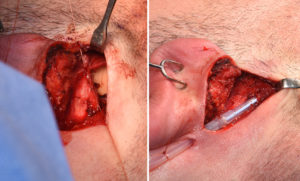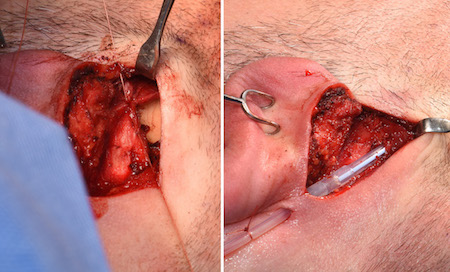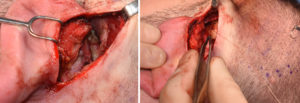Reducing the width or convexity of the side of head is best done by a muscle-based procedure. Removing the entire posterior portion of the temporalis muscle provides an assured technique given the natural width of the muscle in the 7mm to 9mm range. But besides the actual bitemporal width reduction the shape of the sides of the head always changes from convex to a completely straight frontal profile.
This procedure is performed from an incision from behind the ear which allows for a direct ‘line of sight’ when making the subfascial muscle cut. From the top of the ear up to the temporal line in an anterior oblique direction the muscle cut is made with electrocautery in a full thickness fashion. This creates an arbitrary boundary between the anterior and posterior muscle from which the entire posterior section of the muscle is removed.

While I have not had any patient from temporal reduction surgery report any aesthetic issues with the residual cut edge of the muscle, the fascial closure technique helps make for a smoother transition.
Dr. Barry Eppley
Indianapolis, Indiana




